A Cooper Hewitt exhibition showcases the act of peacemaking around the world
Designing Peace
Cooper Hewitt, Smithsonian Design Museum
2 East 91st Street
New York, NY 10128
Open through September 4
Designing Peace argues for peace as a verb: The act is “not simply the absence of war but a dynamic process” which emphasizes “communication, iteration, and an understanding of context” for reducing human conflict. Curators Cynthia E. Smith and Caroline O’Connell put this assertion into action, exhibiting 40 projects from 25 countries organized into five sections: root causes, truth-seeking, confrontation, truth-seeking, environments, and transitional states.
Situated on the former Carnegie mansion’s exhibition-friendly third floor, the show’s designers had relatively free reign to arrange its contents. Working closely with curatorial staff, Boston-based architecture office Höweler + Yoon organized the show along a central axis flanked by smaller galleries; this promenade is defined by a sculptural display platform which suggests at once a canoe bearing refugees, a peaceful waterway, border wall, or the Middle Passage of enslaved Africans. Each is revealed by circumnavigating the surrounding galleries and returning to the prow of the metaphorical boat we occupy together in the show.
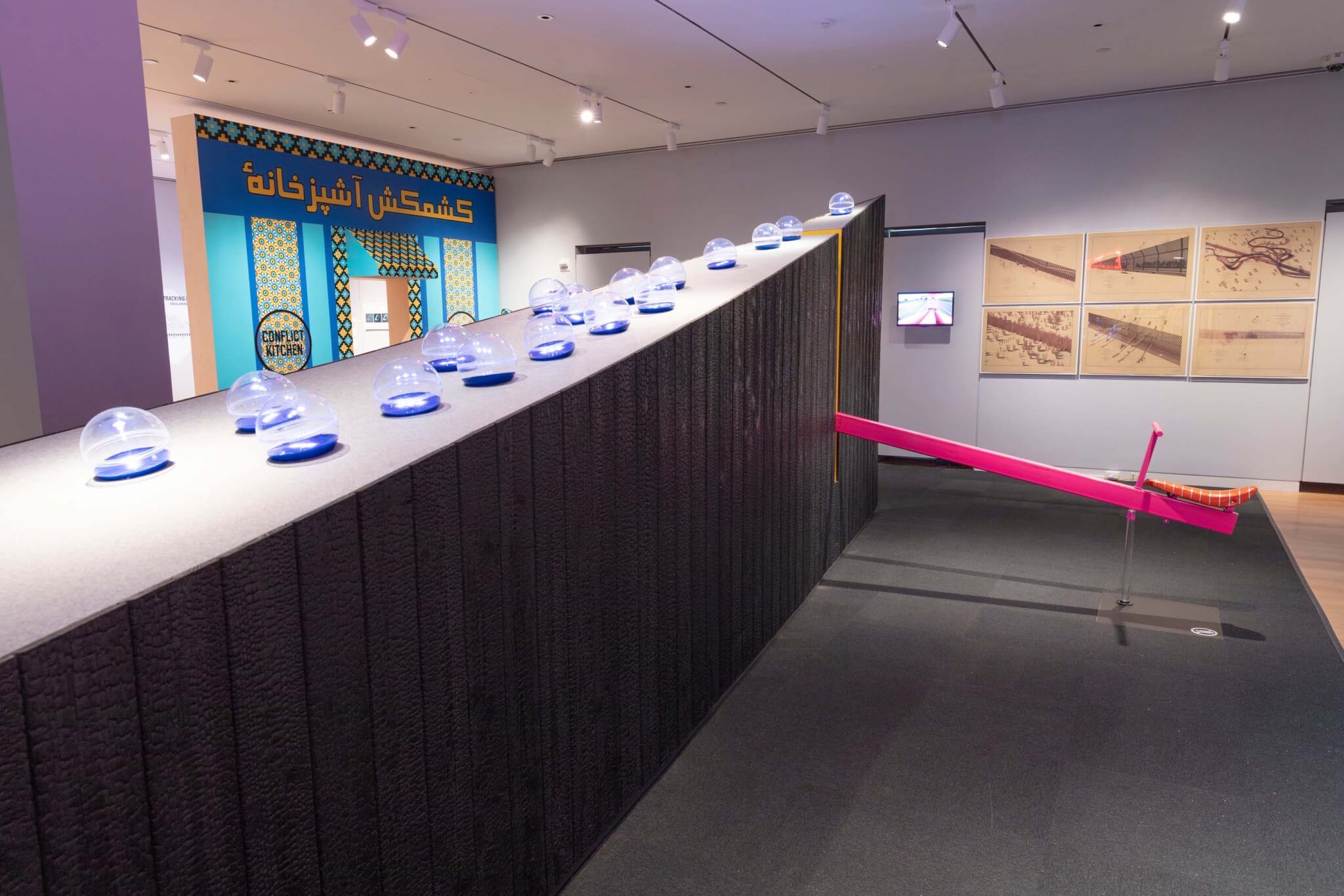
How, then, to materialize peace? Projects range from micro (apps) to macro (interplanetary extraction) and from earthly (toilets) to ethereal (data-driven mapping). Several components are adapted from other exhibitions, which presents a design challenge: Works extracted from larger spaces either occupy a disproportionately large area or were edited at the expense of clarity. Several architectural works are included among the diverse projects, including some that attempt monumental gestures. Within these architectural projects, the most compelling reflect a contemporary interest in small-scale, locally driven approaches that emphasize critical engagement and close observation of human behavior.
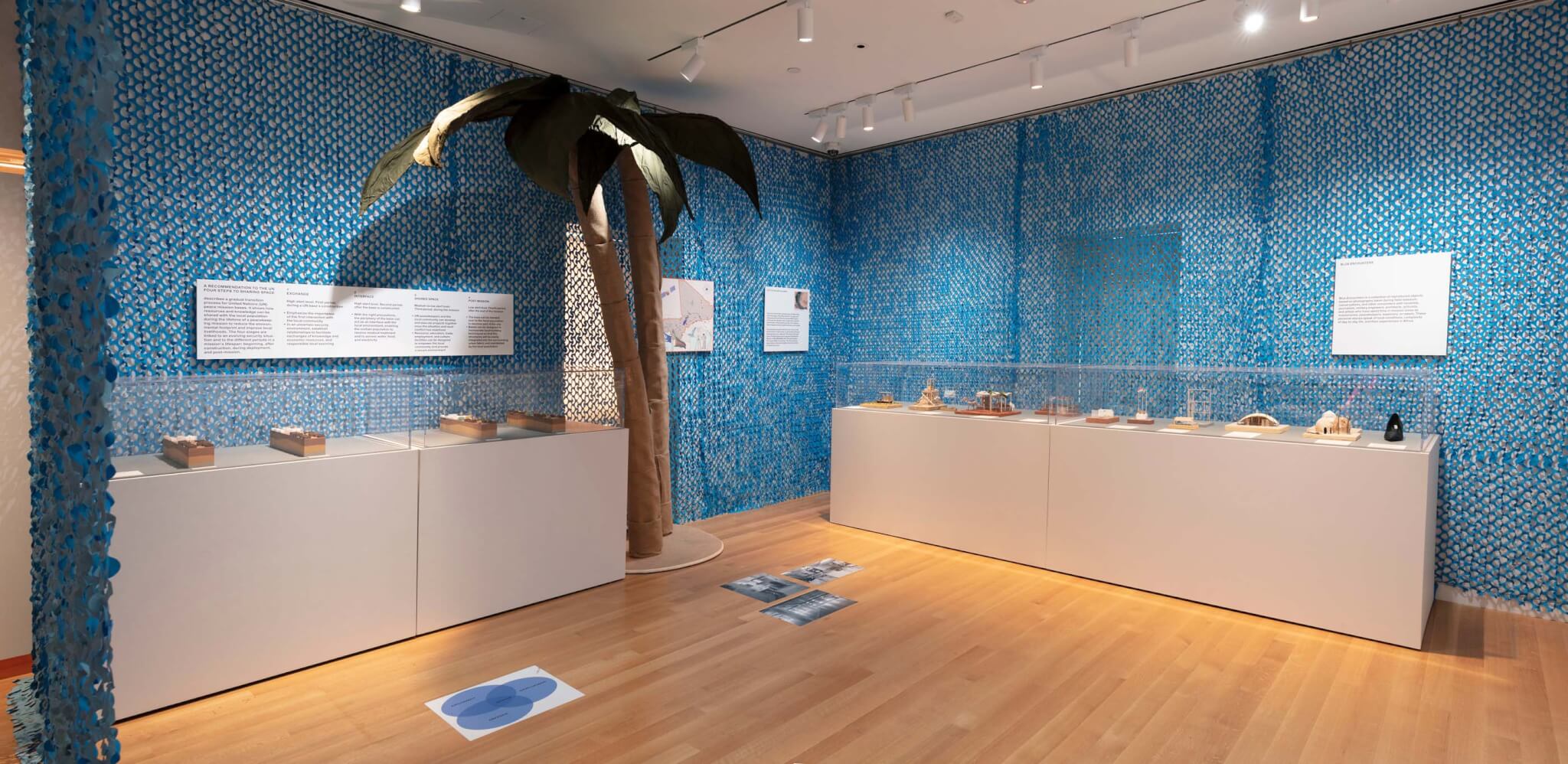
Symbolism at scale is represented by the New World Summit-Rojava by the Democratic Self-Administration of Rojava (West Kurdistan) and Studio Jonas Staal. The open-air dome, intended to incubate collective self-representation in a fraught political landscape, is composed of moveable sections layered on a steel frame, all inscribed with aspirational statements and imagery. Symbolic structures are prone to be short-lived, but as a durable, minimally programmed pavilion in an underbuilt environment, this one may endure.
Reparametrize Studio’s Recoding Post-War Syria represents a more contextual and iterative approach in which habitable spaces are built into the shells of bombed-out buildings, integrating local construction practices and incorporating endless rubble as its starting point. The process involves open-source 3D scanning and modeling of existing buildings—wartime “as-builts”— that in turn fold historic documentation into the process of rebuilding. If successful, this approach could have global applications through organizing and raising awareness of the incremental, decentralized, anonymous local labor that enables survival in the world’s many new ruins.
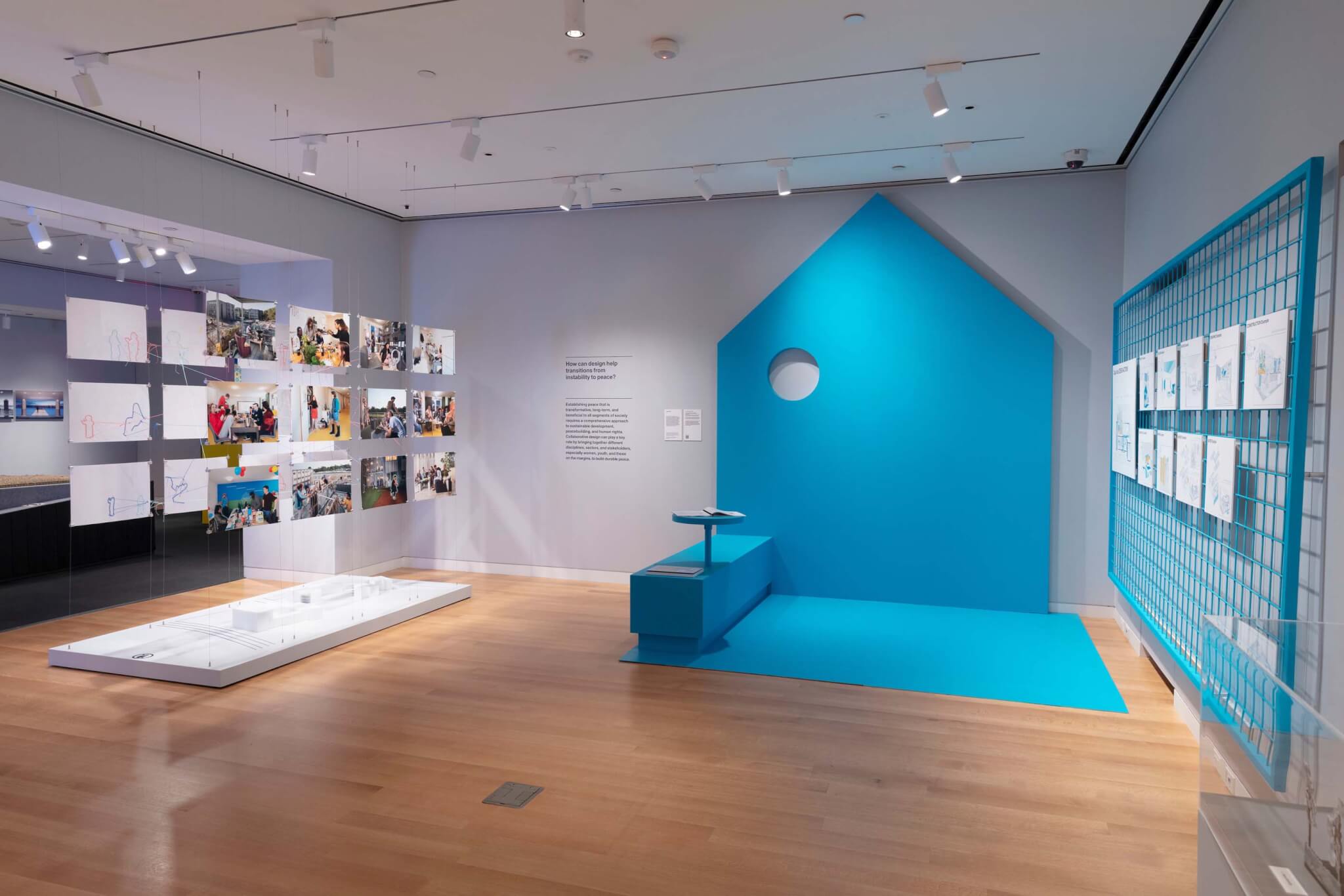
Visitors learn that precisely 77 square meters (around 2,700 cubic feet) are devoted to The Murder of Halit Yogzat, a meticulous installation by multidisciplinary investigative team Forensic Architecture in conjunction with several other organizations. This is the measure of the crime scene: Yogzat’s family’s internet cafe in Kassel, Germany. Stepping into a 1:1 floor plan, a grim story unfolds in the detailed timeline and videos lining the walls: Yogzat’s murder involved a neo-Nazi group, complicit local police, and Germany’s version of the CIA. The intention may be immersive, but the comparatively large gallery space overwhelms the intricate timeline and fine-grained evidence on display, resulting in a distancing effect. Other projects by the prolific team might have been more on-message, such as Beirut Port Explosion, a crowd-sourced, open-data timeline and model that demonstrates the group’s mastery of data-gathering and digital modeling in service of imaging the truth.
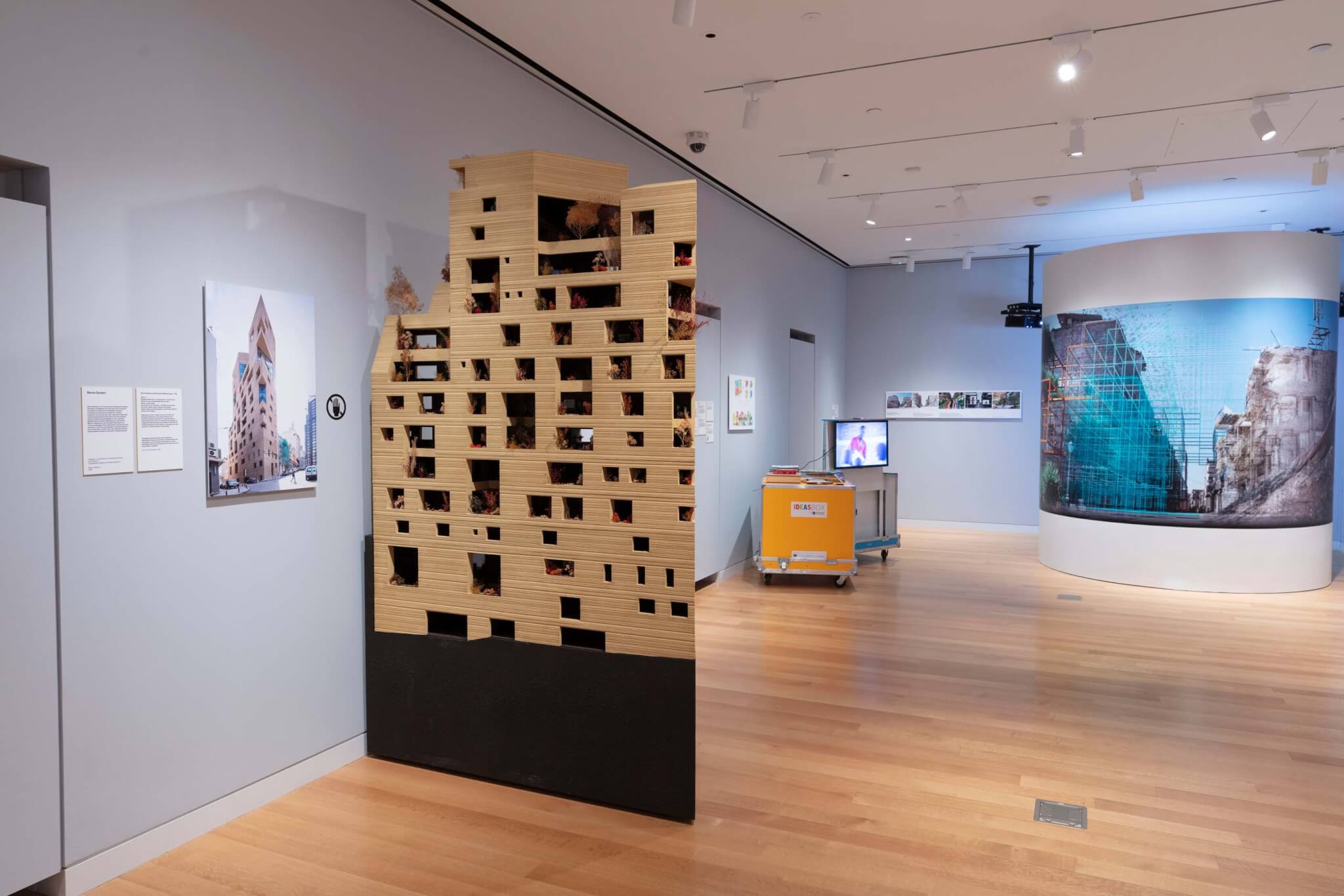
The project most critically engaged with assumptions about emergency building is BLUE: The Architecture of UN Peace Missions by architect and researcher Malkit Shoshan. Examining the imposing design of emergency architecture through multidisciplinary observation of Camp Castor in Gao, Mali, Shoshan argues for considering the full lifecycle of these sites, designing for economic and cultural impact during and long after the mission. Articulated with poignant detail and wit, Shoshan’s study is especially notable for drawing upon observations from diverse participants, including journalists and construction workers. The installation would benefit from clearer explanation of the existing standard for U.N. camps, as models show fencing and suggest gravel-covered infrastructure but offer little sense of a baseline settlement. Adding a few photographs from the catalog, designed by Irma Boom, would do the trick.
Several landscape architecture projects center natural and cultural contexts. For example, Korea Remade, the product of a Harvard Graduate School of Design studio taught by Niall Kirkwood, Jungyoon Kim, and Yoon-Jin Park, reconceives the Korean Demilitarized Zone. The display helpfully emphasizes contradictions inherent in rehumanizing topography commandeered for restriction and surveillance. My Ancestors’ Garden, by Hood Design Studio in collaboration with Pei Cobb Freed & Partners, similarly surfaces an appalling history: Gadsden’s Wharf, where almost half of enslaved Africans in North America were forcibly disembarked, is now part of the International African American Museum in Charleston. There, a water feature below the building is surfaced with near life-size abstractions of the dehumanized figures depicted in notorious diagrams of slave ships. The project will open in January 2023.
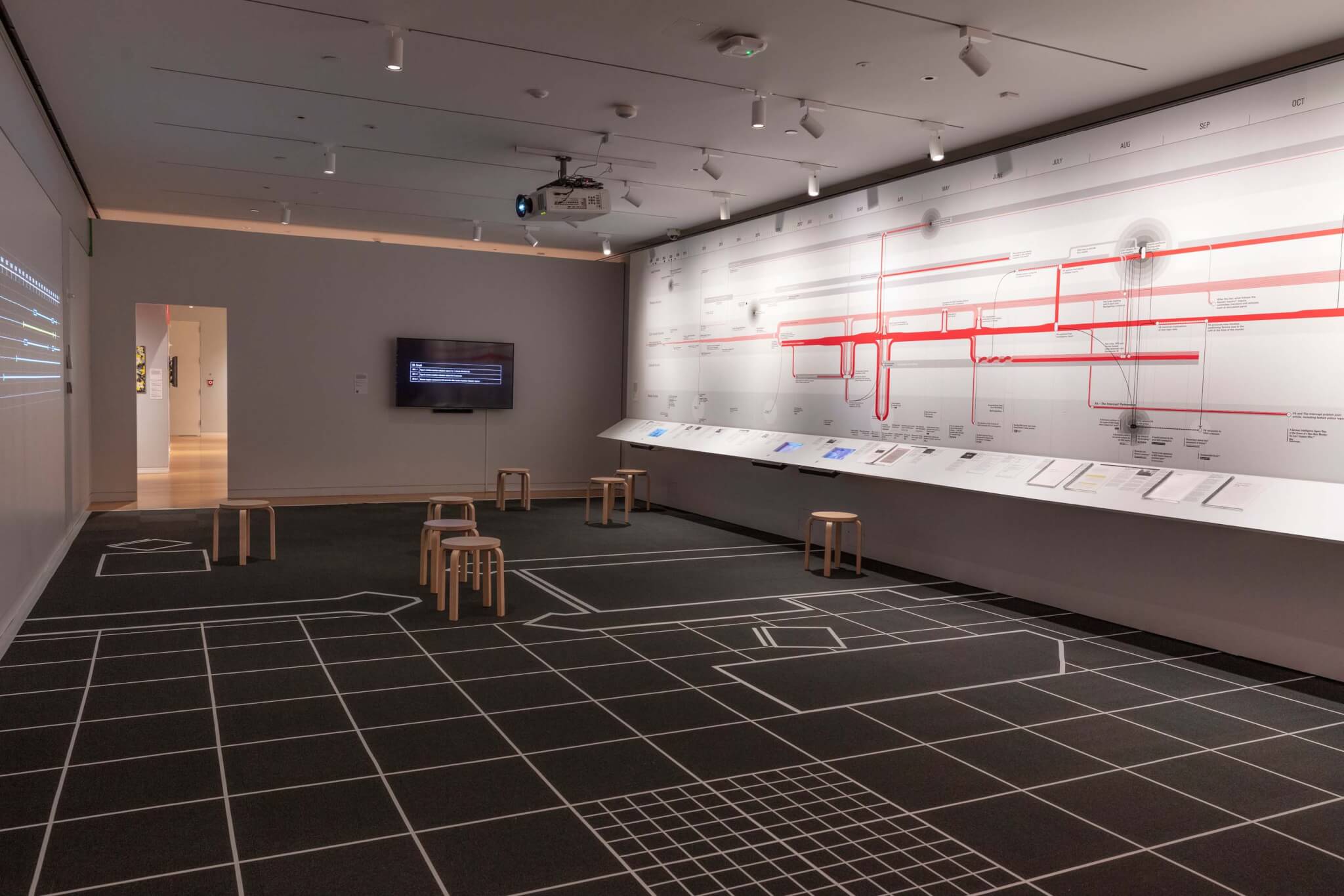
Exiting the show in our metaphorical boat, one is left with a sense that the human body and human behavior remain the raw material of designing peace. This is viscerally exemplified by the Body Mapping project, a collaborative initiative in the Eastern Congo. Gathering around a 1:1 outline of a child’s figure, former youth combatants and their families, guided by facilitators, inscribe and describe their experience, attempting to make sense of psychological territory that may elude even the most sophisticated data mapping tools. Affirming the curatorial emphasis on communication, iteration, and context sensitivity, projects like Body Mapping put peace into effective action.
Jennifer Tobias is a scholar and illustrator based in New York City.





